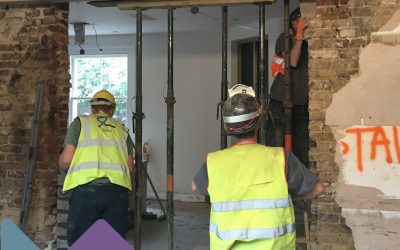In today’s property surveying blog post topic, we are going to be taking a look at Licence for Alterations procedures.
Licence for Alterations procedures are required when a leaseholder plans to undertake works to their property and those works meet the definitions of an alteration.
First and foremost, the important thing to note is that the Licence for Alterations procedures are usually facilitating and in place to ensure that the Leaseholder is able to request and undertake their proposed works.
However, there can be instances whereby alterations may be not possible, or alternatively, refused/disputed by the freeholder.
Generally speaking, there are three different types of Licence for Alterations covenants that exist across all leases.
We are now going to take a closer look at these, in an effort to best advise you and ensure that you are fully abreast with the type of covenant that exists within the lease in question.
Fully Qualified Covenant
A fully qualified covenant is the most favourable Licence for Alteration covenant possible. The lease and covenant will ensure the leaseholder will be able to undertake the proposed alterations work, subject to obtaining the freeholder’s consent.
Importantly, the lease will set out wording whereby the consent cannot be unreasonably refused or withhold.
This effectively means that so long as the leaseholder goes the necessary procedures as set out by the Licence for Alterations protocols and the freeholder requests are met, the are going to be given the alterations consent and can ultimately undertake their proposed works.
If you liken this to a traffic light, this will be a green light, and as set out above, it is the most favourable.
Qualified Covenant
Much like a fully qualified covenant, a qualified covenant will ensure that the leaseholder can progress and undertake the works.
However, unlike a fully qualified covenant, the all important wording that the freeholder needs to provide their consent, that consent not being unreasonably refused or withheld is not prevalent or in place. What this means, is that the freeholder can, if they elect to, refuse the Licence for Alterations permission or consent or, if they are willing to grant it, can levy some form of premium, charge or fee/cost associated with it.
While this scenario is relatively rare these days, there are still solicitors and freeholders who look at this as a keen opportunity to *04.17 funds from their leaseholder and will often pursue this principal.
If you are unlucky enough to have a Qualified Covenant, here at Stokemont, we would advise carefully discussing the alterations procedures with your freeholder well in advance of incurring any professional fees.
As there is a very small chance that the freeholder will dispute or refuse the works, or if they do allow them and attach a levy or premium to them, they may render themselves unaffordable. It is therefore, wise to be abreast of this before too much professional cost is incurred in that regard.
Remaining with the traffic light analogy, if you were to liken this alterations clause to one, this would be an orange or amber reading.
Absolute Covenant
An absolute covenant is unlike either of the previous two alterations covenants that we have discussed.
The key thing to note with an Absolute Covenant is that the alterations clause will set out that the leaseholder cannot undertake any form of alterations to their property.
This is unfortunately, often a definitive and non-negotiable position. In almost all cases, meaning that the leaseholder is not going to be able to progress with their works in any shape or form.
If you have purchased a property and had a conveyancer undertake their normal checks, this is the type of point that a good solicitor should have raised with you in advance of the purchase, as effectively the development plans for the property are hindered and as such, it is commonplace for leaseholders and potential buyers to be made aware of this.
If you liken this to a traffic light, this will very much be a red light.
It is also worth noting that even the most hands on leaseholder is going to struggle to get consent when there is an Absolute Covenant in place, as recent case law specifically sets out a new benchmark on this matter and therefore, if you are unlucky enough to find yourself party to this clause, here at Stokemont, we would advise taking legal advice from a Licence for Alterations specialist solicitor.
As set out at the start of this post, Licence for Alterations procedures are intended to be facilitating, transparent and reasonable.
However, leaseholders can often struggle to get to grips with this as the scenarios and protocols that follow can often feel towards the onerous and cautious side of the spectrum.
The important thing to note is that the procedures are in place to minimise the risk of nuisance, risk, and long term issue to the neighbouring leaseholders, communal areas, and overall envelope of the building.
If you would like to discuss Licence for Alterations procedures with our team of experienced and qualified Licence for Alterations building surveyors, give us a call today and we will be more than happy to assist and advise you.




